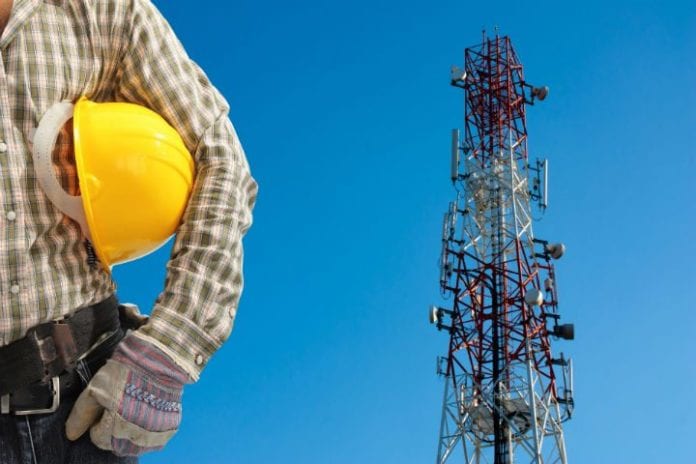As field-based work becomes increasingly complex and time-sensitive, more businesses are focusing on mobile solutions integrated with back-end field-service solutions to help manage field operations and provide their mobile workforces with the real-time knowledge to make better, more intelligent decisions in the field.
Recent research from Aberdeen Group found that 82% of field-service organizations identified mobility as a strategic initiative for their operations in the next 12 months, as a tool to empower workers with real-time intelligence to make decisions and resolve issues while in the field. Companies that understand how to leverage mobility solutions stand to drive efficiencies, improve service and benefit from a more profitable bottom line.
The power of IoT
The “Internet of Things” has huge potential for the field-service industry. It enables devices that are equipped with sensors, hardware and software to be networked together through the Internet, where they can communicate with one another and send and receive data. Machine-to-machine technology is already helping those companies with a mobile workforce find out about issues before they occur, but IoT goes beyond M2M – connecting not just with machines, but with systems, people and other things.
For example, IoT enables companies to gain greater insight into the status and health of their assets remotely, allowing a smarter approach to proactive and preventive maintenance. Sensors can be integrated into their devices in the field, which can yield a huge amount of data on diagnostics, measurements and overall conditions, all of which is key to preventing equipment failure, scheduling maintenance and improving safety.
Increased use of mobile apps
There are a number of different approaches a business can take to create a mobile application strategy, one of which is to develop them internally. Mobile applications provide technicians with the ability to share, store and view job data while in the field, offering them a virtual link to the back office.
Having full visibility of a field operation is a critical factor in success and mobile applications that offer visibility into the status, location and performance of work assets (workers, parts, equipment, etc.) help workers get to the right place at the right time with the information they need to do their job correctly the first time. A number of mobile applications on the market today also provide added value to field workers by allowing them to easily locate and contact nearby co-workers if they need assistance on a job or require advice on solving a problem. By having the tools to work collaboratively first-time resolution is more likely, helping to increase worker productivity and effectiveness.
The abundance of information provided by mobile applications can include previous work history of jobs and upcoming work details. For example, if a technician is en route to the site, a quick look at service history on a mobile phone lets the technician know of any recent issues.
When a technician reviews and accepts a job within a mobile application, the mobile device’s navigation tool can help find the most efficient route, which reduces fuel consumption and travel time.
There are a variety of mobile devices on the market today that help technicians. The problem is choosing the right technology for the field-based workers. Ruggedized devices continue to evolve as mobile technology improves and have been successful in helping field workers complete their daily tasks. Such devices can be used in harsh environments and allow scanning, diagnostics, invoicing and delivery confirmation.
Nonrugged tablets and smartphones are also used in the field. The “bring-your-own-device” debate has been dubbed as the only way for businesses that are looking to compete effectively. BYOD refers to employees having the ability to connect their own technical devices, such as smartphones, laptops and tablets, to their company’s network instead of using a device owned by the company. BYOD has been slow to gather momentum in the field-service industry, but in recent years there has been an influx of workers bringing their personal devices to use on the job.
For organizations with a mobile workforce, BYOD creates new opportunities by increasing the number of tech-savvy and mobile-application users in the workforce. This in turn will lead to increased satisfaction and productivity while eliminating the need for technical support and training costs for the business.
Mobile strategies
When a field-service organization deploys a mobile strategy, the wealth of data captured around technician performance, customer data, vehicle location, work order status, etc., is not enough to make intelligent business decisions. It is how that data is analyzed and turned into usable information that will make the difference. Data captured through mobile devices must be tied into other systems within the organization’s technology infrastructure. Aberdeen Group found that the top strategic action for 62% of best-in-class field-service organizations is to improve data integration between the field and back office systems.
Aberdeen’s research also found that best-in-class field-service organizations are 49% more likely than their peers to integrate data from mobile devices with back-end systems, such as ERP and customer relationship management. This integration will then allow other departments – sales, marketing and engineering – to benefit from the field insights captured and maximize its value.
For example, customer and equipment data can provide insights into new products, services and campaigns, which increases revenue opportunities.
Ultimately, having a mobility strategy in place allows for increased workforce empowerment, data sharing and collaboration in the field. The mobile worker can use real-time information and knowledge to make the right decisions while on the move.
Editor’s Note: In an attempt to broaden our interaction with our readers we have created this Reader Forum for those with something meaningful to say to the wireless industry. We want to keep this as open as possible, but we maintain some editorial control to keep it free of commercials or attacks. Please send along submissions for this section to our editors at: [email protected].
Photo copyright: / 123RF Stock Photo

